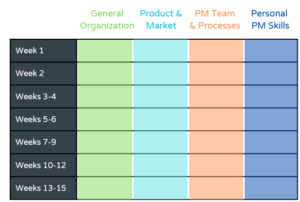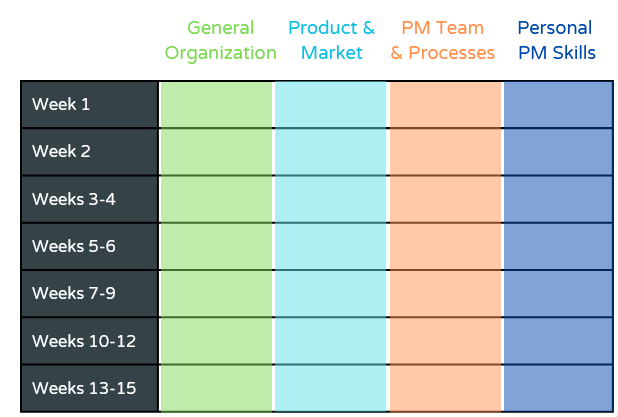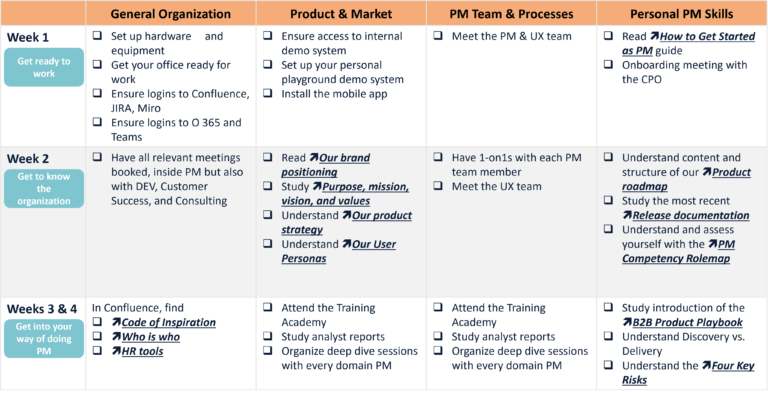Onboarding New Product Managers
From growing teams and onboarding fresh Product Managers into an established organization, we can bring some experience that may help new team members to overcome the initial barriers. While the HR team may support this, we believe this is the responsibility of the hiring Product Leader because only she knows in sufficient detail about the processes, tools, challenges, and future tasks of the new team member.
The Importance of Effective Onboarding
Onboarding is a critical process for any organization that wants to ensure the success of its new hires. It is the process of integrating new employees into the organization and providing them with the knowledge, skills, and tools they need to become productive members of the team. Effective onboarding can help new hires feel welcome, valued, and supported, which can improve their job satisfaction and retention.
It can also help them understand the organization’s culture, goals, and expectations, which can improve their performance and contribution to the team. In this chapter, we will discuss details of a framework we have successfully used to onboard new team members into our growing Product Management team.
Different Aspects of Effective Onboarding
For an effective onboarding of Product Managers, different aspects have to be considered. Some of them are specific to the company, others more on the product level, and yet others focus on personal skill development:
General Organization
New team members have to learn about the vision & mission of the company, its culture, and administrative rules. They also need to know key people and stakeholders, remember PMs are spiders on a web. Keep in mind that oftentimes there are key experts in the organization that might not be immediately visible, e.g., from an org chart — such as the experienced engineer who was hired as employee #5 by the founders and knows every line of code by heart.
Ideally, the onboarding plan lists these key people including contact details. Specifically in a remote-first world that will help a lot.
Product & Market
Every Product Manager needs to understand the market, key customer needs, and the key value proposition of the product & company. Also, they need to learn as much as possible about the product itself by getting their hands dirty and using it themselves to obtain first-hand impressions. By the end of the onboarding period, every Product Manager should be able to provide a convincing demo of the product to interested customers — including the story-telling around the value proposition.
To help during onboarding, the plan should explicitly list relevant material, such as market trends or reports by analysts. Also, important events or customers to talk to, for example by joining an already established Customer Advisory Board.
Product Management Team & Processes
Every product organization works differently and, hence, new team members need to learn about the specific tools being used for Product Discovery and Product Delivery, relevant processes, the collaboration with Product Designers and Product Developers.
The plan should provide introductions to these tools and processes, with references on where to learn more — be it a book or some online resource.
Personal Product Management Skills
Finally, personal skills have to be addressed. Remember, we see Product Management as a craft, so new team members have to learn the relevant tools and methods.
Just as for the processes above, the plan should provide a collection of the most relevant tools, and be it only as a checklist for the experienced Product Manager. For the less experienced, learning opportunities have to be named, again via books, online resources, or even by the Product Leader teaching in 1:1s.
Depending on the background of the Product Manager, the above areas may need to receive more or less attention. An experienced Product Manager who has been active in the industry for a while won’t have much of a skill gap but probably has to learn about the market and product domain. In contrast, a domain expert who just recently stepped into Product Management will have to emphasize skills and tools over domain and market.
Define Weekly Objectives
As a second dimension, beyond the above topics, it is important to provide guidance during the initial weeks so that the new team member understands the objectives. Very explicitly, this isn’t meant to micromanage the new Product Manager but instead to provide guidance and some helpful tips. Since we want to establish an outcome-oriented culture, we also start with outcome-oriented onboarding such as:
Week 1
Get ready to work: Have all your systems, logins, permissions, tools installed, etc.
Week 2
Get to know the organization: Understand who is who in the team but also key players outside of the core product team.
Weeks 3-4
Get into your way of doing Product Management: Depending on your background and experience, learn and adopt the most important tools and frameworks.
Weeks 5-6
Understand your focus area: As part of the bigger product organization, dive deeper into your specific domain, the modules, market segments, or customer journeys that you will be working on.
Weeks 7-9
Start discovering: Talk to internal teams from Customer Success and Consulting, but also reach out to customers, utilize the help of an existing UX research team but get involved personally to listen to customers firsthand.
Weeks 10-12
Start prioritizing: From what you have seen and heard already, narrow down on some important problems and validate your understanding with peers.
Weeks 13-15
Draft your first roadmap items: Reach out to Engineering (if not done already) to dig deeper into selected opportunities, ideate on solutions, and create a draft plan on how to tackle them.
In combination with the 4 onboarding aspects explained earlier, the skeleton of a personal onboarding plan can look like this:
Go Deeper and Provide Guidance with Details
The above aspects x weeks matrix is a great skeleton but by far won’t be enough for a new team member to dive in. They cannot know where to find all the information, who to meet, which rules to follow, or which events to attend.
To onboard them effectively, the Product Leader has to provide as much detail as possible. Just think of going to a restaurant and picking your favorite meal from the menu: Beyond just the name of the dish, you probably also want to know about the ingredients, preparation, and how spicy it is.
For example, for the initial month, the plan might look like this:
Likewise, the plan for the final week of onboarding could look like this:
A few things important to notice here:
- The onboarding plan follows the aspects x weeks schema.
- The plan has very detailed instructions, including links to relevant resources, documentation, and systems.
- The plan, of course, needs to be adjusted for the specific company at hand so that their product, their team, and their processes are addressed. Most notably, the plan will look different for a 10-people startup than for an established corporation.
- The plan also needs to be adjusted for the specific team member. An experienced Product Manager will need less focus on the Product Management Skills aspects whereas an ex-consultant who has been working in the domain for years will already know a lot about the Product & Market.
Technically, we have made good experiences with each topic on that plan being a to-do-item so that it is easy to check them and track progress. But above all:
Review the Status in Extended Weekly 1:1s
As said before, this plan is not meant to micromanage the new team member. Instead, it provides a framework that can guide the new team member and her Product Leader during their weekly 1:1s. In fact, we even recommended fairly extensive 1:1s during the initial weeks, more like 90 instead of the typical 30 minutes per week.
The new team member shall show progress as well as challenges, also point to gaps in the existing onboarding plan so that it can be further improved for later hires.
By jointly going through that plan and thus helping to overcome obstacles, the Product Leader can ensure a smooth onboarding and will have a happy and highly engaged team member very soon.
But above all:
The Product Leader is accountable for guiding new team members.
- When they struggle, the leader has to provide help.
- When they miss information, the leader has to show them where to find it.
- When they have a specific background, the leader has to adjust the plan.
FREE Template

To help you create such onboarding plans, we have provided a FREE template as a Google Doc.
No paywall. No email required. Just a 𝗙𝗥𝗘𝗘 template with detailed instructions for anybody to view, copy, and adjust to your needs.




